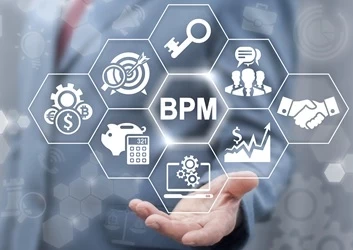What instructional design can teach us about better onboarding
Process management software that supports a document library can really help employees to understand the main responsibilities and expectations of their roles
Add bookmark
Unemployment in the US rose to more than 14 million in May 2020 as a result of the Covid-19, according to Pew Research. Many people seek to reenter the workforce as the world focuses on recovering from the pandemic, signaling to employers the need to have effective, efficient training and onboarding processes at-the-ready.
Create a welcome that works
Most enterprises have an onboarding program. Or at the very least, a set of processes and procedures for new hires that point them in the right direction. Unfortunately, that often amounts to a procedure manual hundreds of pages long that was out of date shortly after it was printed. Few new staff have the capacity to wade through that kind of documentation to find their feet in a competitive and demanding environment.
Onboarding processes need to be clear and well-thought-out if your staff are to have any hope of success in their new roles. There should be a repository of the vital information about both the organization and the tasks expected of the new member of your team. This library cannot just be a list of jobs to do or steps to follow though.
While rote learning may produce the required outcomes, it does nothing to promote competency, engagement or innovation. You may in fact be missing the best parts of what your staff have to offer by constraining them to a sequence of fixed actions.
Take notes from instructional design
The field of instructional design offers a helpful framework for reviewing how onboarding processes work and how we can make them better.
Instructional design is all about designing learning experiences to be effective. The goal is to ensure that people do not just acquire knowledge, but can apply it appropriately and successfully. It is the pursuit of professional training that will actually stick.
To that end, instructional design looks ahead to the desired outcomes and builds training – or in our case, processes – around that.
One of the key frameworks for this approach is to think in terms of what the learner needs to know, what they need to believe and what they need to do.
Onboard teams with the right knowledge
What employees need to know is about information. These are the vital facts that need to be absorbed in order for them to be effective. When it comes to processes, few expect their staff to become the authority on any piece of equipment or system, certainly not at the start of their tenure. However, it is vital that they do understand what their role is and how to find the information that supports it.
Good onboarding processes will emphasize key understandings and be supported by clear documentation. The use of process management software that supports a document library will go a long way toward this goal.
Instead of teams working on assumption or recollection, important information like policies, compliance regulations, checklists or forms can be incorporated into the process management platform, ensuring the right data is on hand when it is needed.
Introducing new hires to this system and making them familiar with where to access these links and files will make sure they have both the foundational understanding of the role and a wealth of information at their fingertips.
Train the mind-set
What the new hire needs to believe may seem a little vague, but this outcome is about how our teams think and approach their tasks. While it is important for them to be able to access procedural information, they also need to understand when and why that content is important.
This includes communicating company values and culture. Health and safety is a significant issue for almost every enterprise, but many treat it as a check-box exercise at the ‘coal face’ level. Building a sense of the value of good safety practices into your processes and procedures can ensure that compliance is both informed and motivated, rather than given lip-service by critical stakeholders.
When company values are integrated into onboarding and business processes, it encourages innovation too. By communicating a passion for great customer outcomes and excellent service in help-desk processes, team members will be more inclined to think about new ways of achieving those goals, and more willing to suggest process improvements and enhancements.
Rather than just meeting the objectives set, teams will have a sense of why those targets exist – a belief in the mission and purpose of their role – and have a more innate drive to extend those goalposts.
Clearer tasks for better outcomes
Finally, instructional design is concerned with what a learner will do. This is the core of our onboarding processes – understanding their key responsibilities is a vital part of settling new hires into their roles.
A study done by LinkedIn suggests that 80 per cent of professionals suffer significant nerves before starting a new job. Having clear instructions and a well-thought-out path for onboarding can go a long way toward alleviating that anxiety.
New hires should understand what their core tasks are, how they are expected to achieve them and where to find the resources they need to succeed. All of those should be captured and accessible through well-written processes.
The onboarding process should both be captured within your process management platform, and should include an introduction to the system. By empowering teams to find processes quickly and easily, they will have all the information they need at their fingertips and the knowledge of how to access information that is clear and easy to follow.
When it comes time to start executing their tasks, employees will know exactly what to do at every step, or where to look in the first instance to find that out.
Onboarding and training are vital processes for any business as the world continues to recover from the pandemic. They should not be relegated to unwieldy documentation or word of mouth. Take a leaf out of the instructional design book and build processes that will ensure your new staff understand more than just where to find the break room on their first day.
By giving new hires a chance to grasp what they need to know, believe and do, you set them on a path to success that positively impacts them, their contribution and your organization.





























